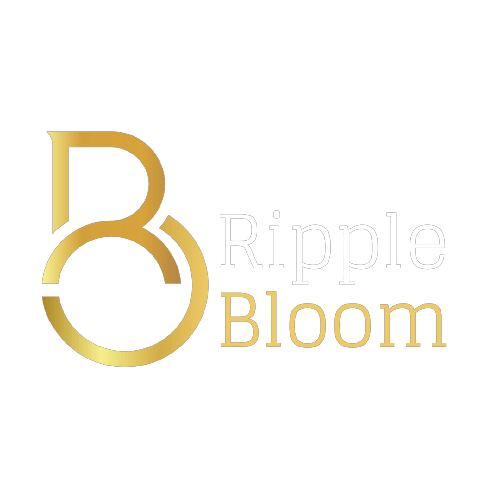Social media has revolutionized the way we connect and communicate with each other. Platforms like Twitter, Instagram, Facebook, and LinkedIn have given individuals, businesses, and organizations the opportunity to reach a wider audience than ever before. However, with so much content being shared on these platforms, it can be difficult to stand out and get noticed. One way to increase your social media reach and visibility is through the use of hashtags.
Hashtags are words or phrases preceded by the pound sign (#) that are used to categorize content on social media. When a user clicks on a hashtag, they are directed to a feed of all the posts that have used that same hashtag. This means that using relevant and popular hashtags can help your content get discovered by people who are interested in the same topic.
In this article, we will discuss how to maximize your social media reach with hashtags. We will cover the following topics:
1. Understanding the different types of hashtags
2. Researching hashtags
3. Choosing the right hashtags for your content
4. Creating your own branded hashtags
5. Using hashtags effectively on different social media platforms
6. Tracking the success of your hashtag strategy
Understanding the different types of hashtags
Before we dive into how to use hashtags effectively, it's important to understand the different types of hashtags that exist. There are three main types of hashtags: generic hashtags, trending hashtags, and branded hashtags.
1. Generic hashtags: These are the most commonly used hashtags and they are used to categorize content by topic. Examples of generic hashtags include #food, #travel, and #fitness. Generic hashtags can be useful for reaching a wider audience and getting your content discovered by people who are interested in a particular topic.
2. Trending hashtags: These are hashtags that are currently popular and being used by a large number of people. Examples of trending hashtags include #throwbackthursday, #motivationmonday, and #tbt. Using trending hashtags can help your content get discovered by people who are interested in what's currently popular or trending.
3. Branded hashtags: These are hashtags that are unique to your brand or business. Examples of branded hashtags include Nike's #justdoit, Coca-Cola's #shareacoke, and Starbucks' #redcupcontest. Branded hashtags can be used to promote your brand or a specific campaign, and can help increase brand recognition and engagement.
Researching hashtags
Now that you understand the different types of hashtags, the next step is to research the hashtags that are relevant to your content. Here are some tips for researching hashtags:
1. Use social media analytics tools: Social media analytics tools like Sprout Social, Hootsuite, and Buffer can help you identify popular and relevant hashtags in your industry. These tools can also provide insights into the performance of different hashtags and help you track the success of your hashtag strategy.
2. Look at what your competitors are doing: Take a look at what hashtags your competitors are using and see if they are relevant to your content. This can give you an idea of what hashtags are popular in your industry and what your target audience is interested in.
3. Use Google: Google can be a powerful tool for researching hashtags. Simply type in a keyword or phrase related to your content and see what hashtags come up. You can also use Google Trends to see what topics are currently popular and what hashtags are being used to categorize content related to those topics.
Choosing the right hashtags for your content
Once you've researched relevant hashtags, the next step is to choose the right hashtags for your content. Here are some tips for choosing the right hashtags:
1. Use a mix of generic and specific hashtags: Using a mix of generic and specific hashtags can help your content reach a wider audience while also targeting people who are interested in your specific topic. For example, if you are sharing a post about healthy eating, you might use the generic hashtag #healthyeating as well as more specific hashtags like #plantbased or #mealprep.
2. Use hashtags with a high volume of posts: While it's important to use specific hashtags that are relevant to your content, it's also important to use hashtags that have a high volume of posts. This will increase the likelihood that your content will be discovered by people who are interested in the same topic.
3. Use trending hashtags sparingly: While using trending hashtags can help increase your visibility, it's important to use them sparingly and only when they are relevant to your content. Using too many trending hashtags can make your content look spammy and decrease its credibility.
Creating your own branded hashtags
In addition to using existing hashtags, you can also create your own branded hashtags. Branded hashtags can be used to promote your brand or a specific campaign, and can help increase brand recognition and engagement. Here are some tips for creating your own branded hashtags:
1. Keep it short and simple: Branded hashtags should be short, simple, and easy to remember. Avoid using long or complicated hashtags that are difficult to type or remember.
2. Make it unique: Your branded hashtag should be unique to your brand or campaign. Avoid using hashtags that are already being used by other brands or that are too generic.
3. Promote your branded hashtag: Once you've created your branded hashtag, promote it on your social media channels and encourage your followers to use it. You can also include your branded hashtag in your bio or in your posts to increase visibility.
Using hashtags effectively on different social media platforms
Each social media platform has its own rules and best practices for using hashtags. Here are some tips for using hashtags effectively on different social media platforms:
1. Twitter: Twitter is known for its use of hashtags, and using them effectively can help increase your visibility on the platform. Use a mix of generic and specific hashtags and limit your use of hashtags to two or three per tweet.
2. Instagram: Instagram allows up to 30 hashtags per post, but using that many can make your post look spammy. Use a mix of generic and specific hashtags, and consider adding your hashtags in a comment rather than in the caption to keep your caption clean.
3. Facebook: While Facebook allows the use of hashtags, they are not as commonly used on this platform. Use one or two relevant hashtags per post, but avoid using too many.
4. LinkedIn: LinkedIn recently added the ability to use hashtags, and using them effectively can help increase your visibility on the platform. Use a mix of generic and specific hashtags, and limit your use of hashtags to three per post.
Tracking the success of your hashtag strategy
Finally, it's important to track the success of your hashtag strategy to see what is working and what isn't. Here are some metrics to track:
1. Impressions: This is the number of times your content has been viewed with a specific hashtag.
2. Engagement: This is the number of likes, comments, and shares your content has received with a specific hashtag.
3. Follower growth: Tracking your follower growth can give you an idea of how your hashtag strategy is impacting your overall social media presence.
4. Click-through rate: This is the number of clicks your content has received with a specific hashtag.
By tracking these metrics, you can adjust your hashtag strategy and optimize it for maximum reach and engagement.
In conclusion, using hashtags effectively can help increase your social media reach and visibility. By understanding the different types of hashtags, researching relevant hashtags, choosing the right hashtags for your content, creating your own branded hashtags, using hashtags effectively on different social media platforms, and tracking the success of your hashtag strategy, you can create a powerful social media presence and engage with your audience. Remember to keep your hashtags relevant, specific, and unique to your brand, and to track your metrics to ensure your hashtag strategy is working effectively.
While hashtags can be a valuable tool for increasing your social media reach, it's important to remember that they are just one aspect of a successful social media strategy. To maximize your social media impact, be sure to also focus on creating high-quality content, engaging with your audience, and building a strong brand identity.
In addition, it's important to stay up-to-date with the latest trends and best practices for social media marketing, as the landscape is constantly changing. Attend webinars and workshops, read blogs and articles, and follow social media marketing experts to stay informed and adapt your strategy accordingly.
Ultimately, by using hashtags effectively and integrating them into a comprehensive social media strategy, you can maximize your social media reach and connect with your audience in a meaningful way.




Leave a Reply